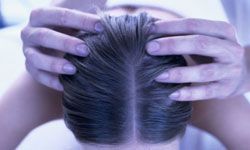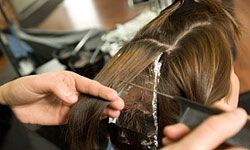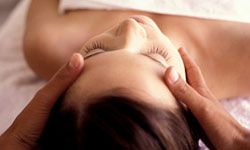On the Fox television show "Glee," sneering cheerleading coach Sue Sylvester reveals that she puts down glee club mentor Will Schuster's hair because she's jealous. It seems that as a teenager, Sylvester bleached her hair with napalm, damaging her scalp so severely that she's been forced to keep her hair short ever since.
Of course, "Glee" is just a television show, and Sue Sylvester's napalmed scalp is fiction. However, you need only to glance at the snowflakes on an officemate's shoulders or your own limp, lifeless locks in the mirror to realize that unhealthy scalps are a problem. A damaged scalp can be itchy and flaky or oily and scaly. In severe cases, a person may develop scalp sores or suffer hair loss. Many things including diet, hormonal fluctuations, medication, hair care products and the environment affect the health of your scalp. Like Sue Sylvester's corrupted coif, many modern scalps -- and the hair they wear -- could benefit from some TLC. Here are a few tips to help you get your scalp back into superior shape.
Advertisement


